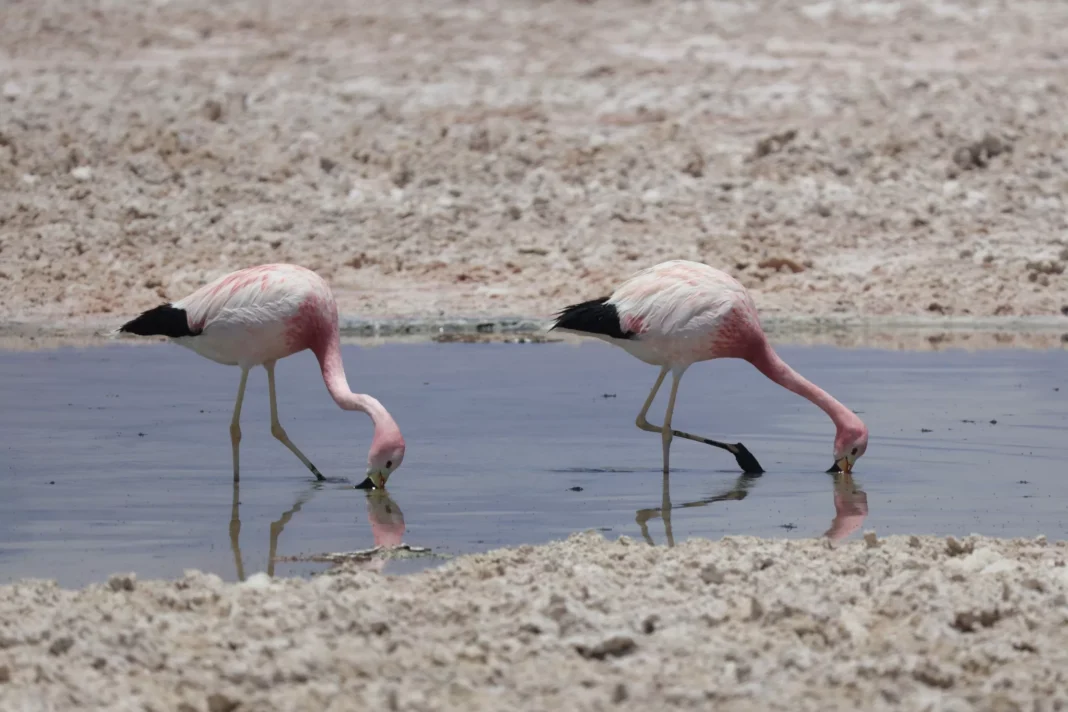Flamingos are not just Florida lawn decor—they are a remarkable bird that thrives in the driest desert on the planet. In honor of Earth Week 2025, this is episode 24 of Stories of Resistance.
When we think of flamingos, we often picture them standing gracefully in shallow waters, their vibrant pink feathers reflecting in the sunlight. But did you know that these beautiful birds are not just limited to Florida’s warm climate? In fact, they are found in many parts of the world, including the driest desert on the planet.
Yes, you read that right. Flamingos are not just limited to tropical or subtropical regions. They are also found in the Atacama Desert in South America, known as the driest non-polar desert in the world. This is where our story of resistance begins.
The Atacama Desert is a harsh and unforgiving environment, with extremely low levels of precipitation and high temperatures. It is a place where survival is a constant struggle, and only the most resilient species can thrive. And yet, amidst this seemingly inhospitable landscape, the flamingos have found a way to not only survive but also thrive.
These magnificent birds have adapted to the extreme conditions of the Atacama Desert in remarkable ways. Their long legs and webbed feet allow them to wade through shallow waters, searching for food in the form of algae and small crustaceans. Their uniquely shaped beaks are perfectly designed to filter out these tiny organisms from the water. And their pink feathers, which are actually white, turn pink due to the pigments found in their food.
But perhaps the most impressive adaptation of the flamingos is their ability to withstand the harsh climate of the Atacama Desert. They have a special gland near their nostrils that allows them to excrete excess salt from their bodies, making it possible for them to drink the salty water found in the desert. This is a crucial survival mechanism, as freshwater sources are scarce in this arid region.
The resilience of the flamingos in the face of such adversity is truly remarkable. It is a testament to the incredible adaptability of nature and the power of evolution. These birds have found a way to not only survive but also thrive in one of the most challenging environments on Earth.
But their story of resistance doesn’t end there. Flamingos are facing numerous threats to their survival, including habitat loss, pollution, and climate change. As we celebrate Earth Week 2025, it is more important than ever to recognize the importance of protecting these incredible creatures and their fragile ecosystem.
We must also acknowledge the role of human activity in the degradation of the environment and take responsibility for our actions. It is up to us to make a positive impact and ensure a sustainable future for all species, including the flamingos.
So, as we marvel at the resilience of these birds in the Atacama Desert, let us also be inspired to take action and make a difference. Let us celebrate the beauty and diversity of our planet and work towards preserving it for future generations.
In conclusion, flamingos are not just Florida lawn decor—they are a symbol of hope and resilience in the face of adversity. As we continue to tell the stories of resistance, let us remember the incredible journey of these birds and the important lessons they teach us about survival and adaptation. Happy Earth Week 2025!


